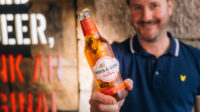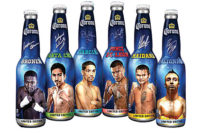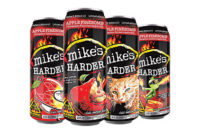As July 4 approaches, beer manufacturers prep for holiday sales
Predictive pricing offers brand owners insights into consumer spending habits

(Image courtesy of Getty Images)
Summer officially begins June 20, but for many the biggest celebration of summer is around the Fourth of July holiday. This is showcased through the amount of money that consumers are willing to spend.
According to Capital One Shopping Research, American consumers spent an estimated $15.8 billion for the Fourth of July in 2023. The lion’s share of that spend ― $9.5 billion ― was on food followed by $4.02 billion on alcohol ― mostly beer, the research shows.
Citing 2022 data, Capital One Shopping Research indicates that consumers spent $2.5 billion on beer, hard cider and flavored malt beverages (FMBs) for July 4.
As we quickly approach another celebration season, though, beer manufacturers are seeing increasing competition when it comes to consumers’ dollars.
In a Q&A with Beverage Industry, Kristine Joji, executive vice president of strategy consulting at Insite AI, offers some insights with how brand owners can position themselves to stay competitive in today’s beverage alcohol market.
 Beverage Industry (BI): With the Fourth of July holiday approaching, what market trends are impacting consumers’ beer purchasing decisions?
Beverage Industry (BI): With the Fourth of July holiday approaching, what market trends are impacting consumers’ beer purchasing decisions?
Kristine Joji (KJ): There are a few market trends influencing consumers’ beer purchasing decisions. On a macro level and across many categories, we’re seeing consumers spend less all around, thanks to inflation continuing to bear down. Many retailers such as Target and Walmart are slashing their prices as a direct result. The pattern of tightened spending will no doubt also come into play as consumers look at items for their Fourth of July celebrations, including beer.
Historically, the Fourth of July is a major holiday for beer brands. The National Beer Wholesalers Association ranks it as the holiday that powers the most beer sales. As well, in 2023, according to Capital One Shopping research, more than 61% of all alcohol sales for July Fourth landed in the category of beer, cider and flavored malt beverages. That’s why the assortment, pricing and promotion decisions that beer brands make this season are so prominent.
Also, within beer specifically, consumer product preferences are undergoing a few minor shifts. The market has seen a growing trend toward health-conscious choices, with more consumers opting for low-calorie beer options, hop water and hard kombucha to align with their wellness goals even during festive occasions. In addition, some consumers, especially younger consumers, are sober curious ― a cultural movement where consumers are limiting alcohol consumption or cutting it out completely ― which is leading a number of beer brands to explore alcohol-free offerings. We’re also seeing hard seltzers maintain their popularity among beer consumers. Additionally, micro, regional and local breweries are popping up at increasing rates as customers are starting to gravitate toward locally sourced beer products.
BI: How can beer brands adjust their approach this holiday season to engage with consumers?
KJ: One key thing I think that beer brands need to consider as they approach the Fourth of July is pack sizes. Given inflation, as I spoke about above, many products that used to be affordable for households have now become luxury. With beer, as budgets are growing tighter, brands need to thoughtfully consider pack sizes through that lens. This will differ by brand, but finding a way to reduce the overarching price point to find the optimal pack size allows customers to buy the amount of beer they want without feeling like they’re spending too much.
Additionally, brands must ensure they hyper-localize their assortments at a granular level, ensuring they meet the specific customer needs for each store they have a presence in. For example, one region may demonstrate a strong preference toward hard seltzers, so how can a beer brand cater to that region given that information? That brand can ensure that at their partnering retailers in the region, they offer their Margarita-mixed beer product at that store. The product is closest in flavor profile to hard seltzers, so it has the potential to drive additional sales.
Beer companies are also going to need to look closely at their trade promotion optimization to decide how they want to spend their trade and pricing dollars to get the most ROI and convert the most shoppers. This also ties back into pack sizes as I mentioned previously; some packs may be worth investing in to cater best to cash-strapped consumers.
BI: What is predictive pricing, and how can beer brands explore this scenario?
KJ: Predictive pricing is running scenarios to reveal anticipated sales volumes as a result of different price points.
That said, AI-driven predictive pricing itself is crucial for beer brands because not only can it reveal what ROI to expect from price changes, it can also identify where exactly the change is coming from. For example, say a brand runs a scenario where it reduces the price of its eight-pack IPA product. A predictive pricing scenario may reveal a demand transfer up from purchasing six-packs within the brand. This is also why a brand understanding its goals as a company is critical when making decisions around optimizing pricing ― if the company’s goal was to transfer demand from outside the brand, reducing the eight-pack IPA price may not be its best option.
Another example of a predictive pricing capability that I can give from my experience with Insite AI is that we can look at pricing over the past two years ― especially regarding discounts that were implemented over past holidays ― and gauge how deep the discounts were and what the end result was. That data provides extra historical context to inform predictive responses around prices in the current day.
With predictive pricing around the Fourth of July specifically, one thing that beer companies must remember is to consider the nature of the holiday: shoppers are likely going into the store not for a specific beer brand, but to pick up multiple drink options. That said, brands should look at the total expenditure for the holiday, not only on what’s going on with their specific brand.
BI: How might strategies differ for smaller brands versus national ones?
KJ: The goals for smaller beer brands versus national ones are fundamentally different. Smaller beer brands are likely looking toward new user acquisition and therefore adopting offensive strategies. As such, while competitive pricing is still important, they’re prioritizing efforts around sparking conversations about their products, emphasizing the factors that make their brand special and broadening their reach in retailers.
National brands, on the flip side, are defending their territory and looking to drive additional sales. While customer acquisition is also important, national brands often are playing the dual role of both maintaining current customers and acquiring new ones.
Looking for a reprint of this article?
From high-res PDFs to custom plaques, order your copy today!






